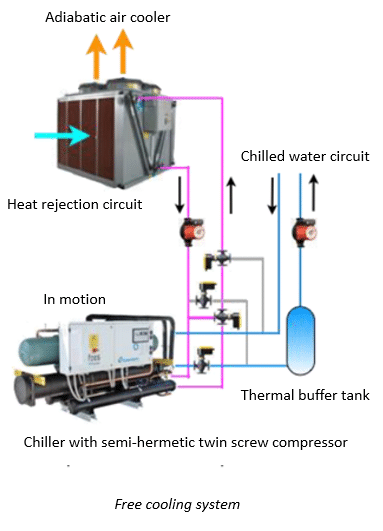The metaverse : tomorrow’s new virtual world

Building a virtual and interconnected parallel universe, mixing virtual reality and mixed reality, is becoming the new challenge where the biggest dream to set up.
Mark Zuckerberg announced that if this virtual world were to be created, it would require a computing power multiplied by 1000 compared to that available today.

But what environmental impact will this new world have ?
The Internet currently represents 5% of the world’s greenhouse gas emissions through data centers, without which no data could be organized, stored and processed.
Today, the Internet already represents 5% of the world’s greenhouse gas emissions through data centers.
The risks of data loss
Poor ventilation, heat waves, defective electrical appliances, are many causes of overheating in data centers. And as a consequence, a strong increase in heat that can lead to fires. The cooling of data centers is therefore necessary to avoid their degradation.
The environmental impact of digital technology
Within 15 years, the environmental impact of digital technology will increase threefold. The largest data center in Europe is located in Covhila, Portugal, with a surface area of 75,500 m².
One of the reasons for this is that half of the energy consumed by a data center is used to cool the system
Therefore, in order to fight against this ecological impact, PHOSPHORIS has imagined and designed solutions that respect the environment and air quality.
PHOSPHORIS solutions
First of all, the choice of equipment is essential, in particular thanks to the ASHRAE classification which allows to classify the equipment according to their resistance to temperature and hygrometry.
Then, the specific organization of the rooms is recommended, in order to adapt the temperature set points, to define the hygrometry rates, to manage the luminosity, and finally to optimize the cold and hot corridors thanks to the mapping.
Finally, the optimization of the cold production is studied. The production of cold by high efficiency group, the use of free cooling in order to cool thanks to the outside air, the use of free chilling in order to produce cold as well, deploying renewable energy and finally evaluating the CUE (Carbon Usage Effectiveness).
All of these systems implemented allow for the distribution of heat sources and cold production, thus standardizing temperatures and reducing expenses related to air conditioning and environmental impact.

PHOSPHORIS then proposes an additional management of the air flows in order to achieve significant and secure energy savings for a low carbon supply.
For this purpose, waste heat is recovered for heating offices or housing in the vicinity. The implementation of gas trigeneration electricity production to simultaneously produce electricity, cold and heat. The cold is stored in order to reduce the power of the refrigeration unit. And finally, to control the quality of the air.
Thus, thanks to all the solutions proposed for data centers, PHOSPHORIS aims at reducing the energy bill, optimizing the energy efficiency and increasing the availability of data.
For more informations, contact us



